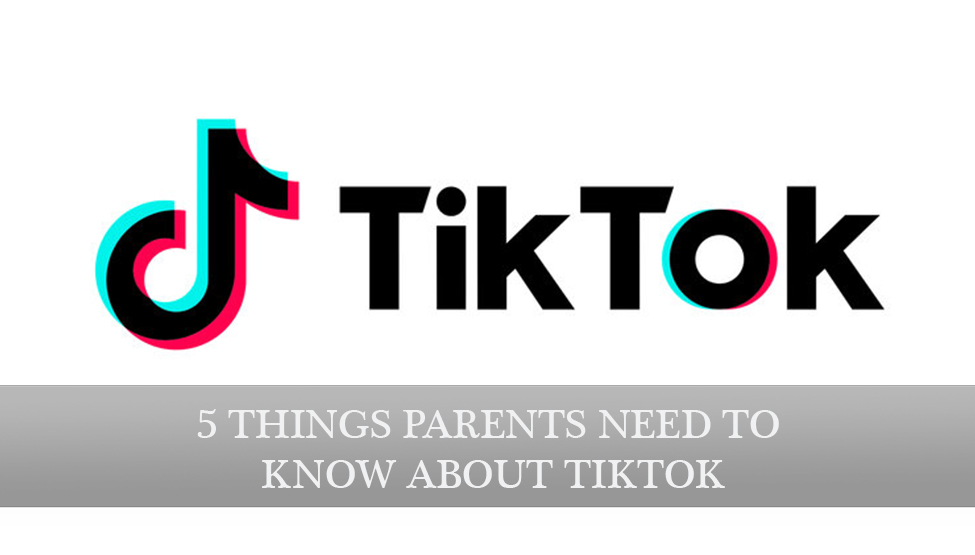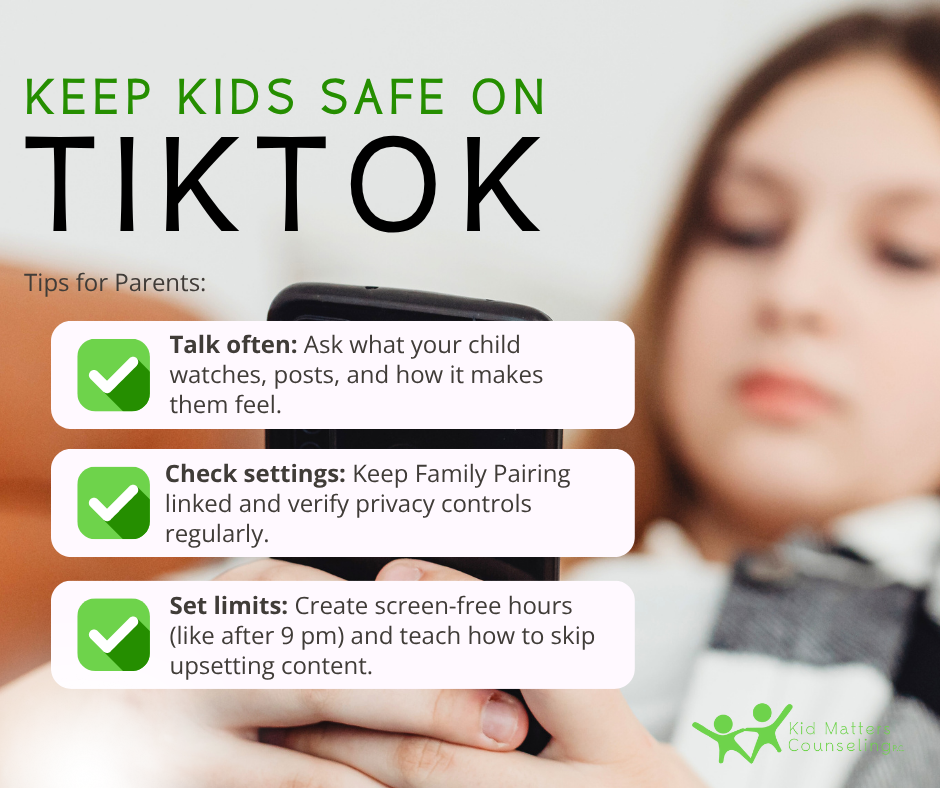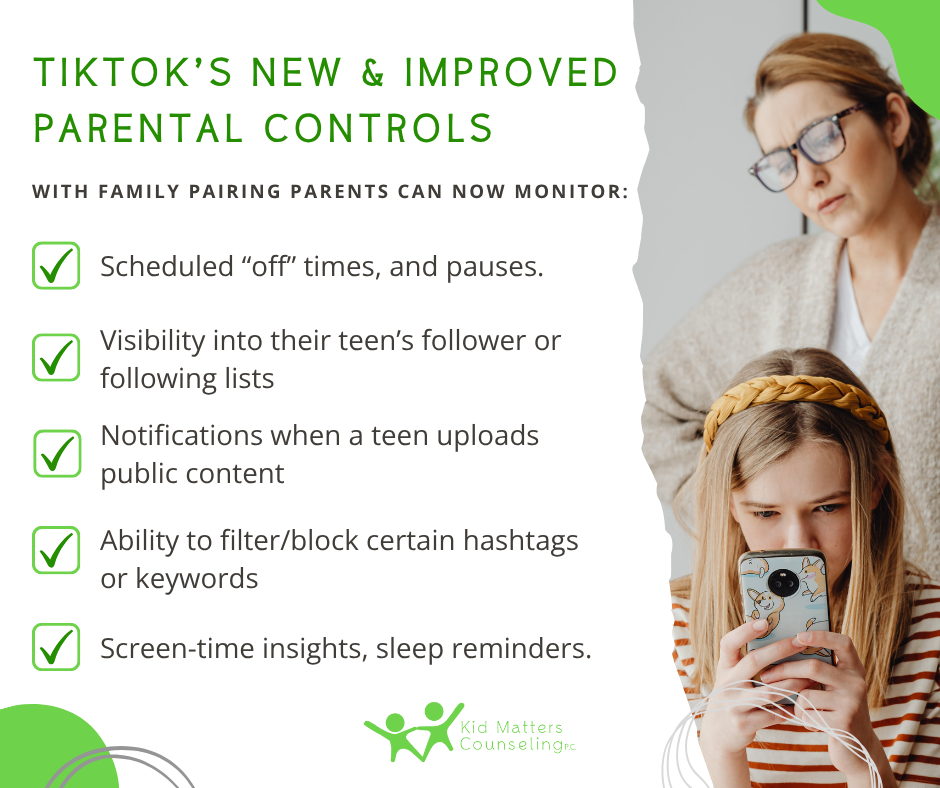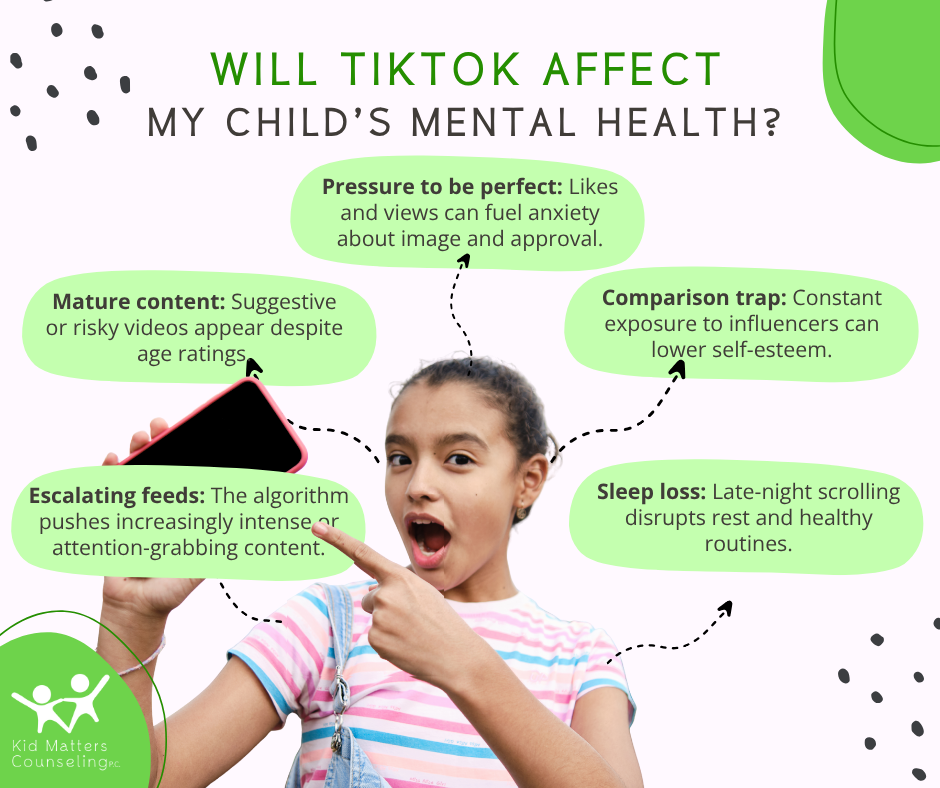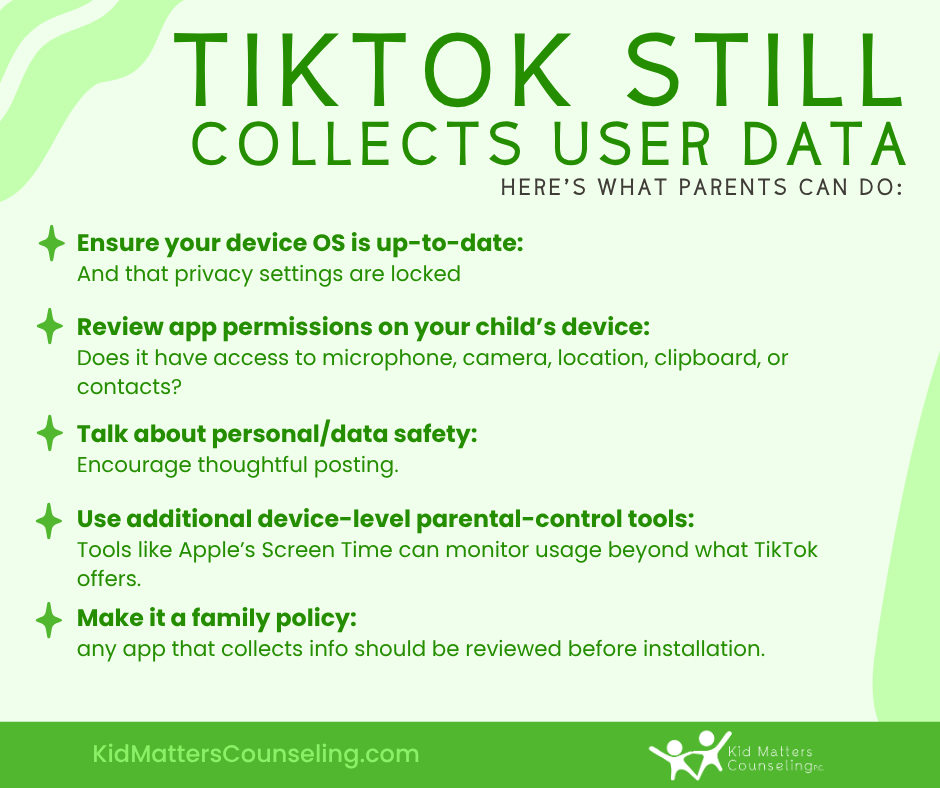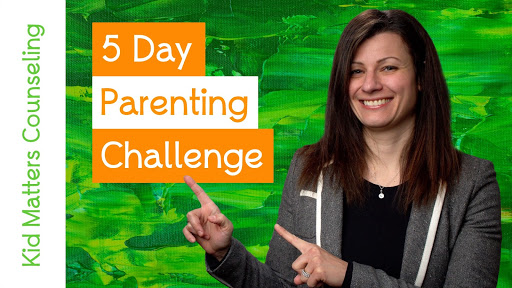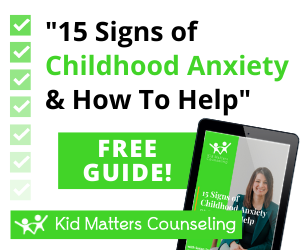As parents, you face the very real challenge of keeping your child safe, confident and balanced in a digital world that never slows, and with TikTok boasting around 1.59 billion monthly active users worldwide in 2025 and having been downloaded well over 5 billion times globally, the pressure can feel overwhelming.
You don’t want your child to drift through an algorithm-driven sea of videos unchecked, but you might not always know what they’re seeing, posting, or being influenced by. That’s where you come in.
By understanding how TikTok works, setting smart boundaries, and having open conversations you become the guide your child needs so they can engage creatively, socially and safely, rather than being swept along.
This guide will walk you through five essential things to know about TikTok in 2026, so you can reclaim clarity, confidence and connection with your child in this fast-moving space.
So here are 5 Things Parents Need to Know about TikTok in 2025
1. Is TikTok Safe for Kids?
What has changed (and what hasn’t).
- The app still presents many of the same risks as before: public exposure, interactions with strangers, suggestive content, social comparison, but the platform has added new safety and transparency features.
- For younger users (ages 13-15) the account is private by default and certain posting/download permissions remain restricted unless changed.
- In 2025 & early 2026, TikTok added significantly to its family/parent tools: For example, in its July & September 2025 updates the platform announced that parents can now be notified when a teen uploads a video or story, see which topics shape their teen’s feed, and have more control over features like downloads, “Duet” and “Stitch.”
- TikTok also introduced more robust digital-well-being options – e.g., “Well-being Missions” (interactive quizzes + badges), screen-time/sleep reminders, and a “Time Away” mode to pause access during certain hours.
- However, research continues to raise concerns: a recent independent study found “minimal differences” in harmful content exposure between youth- and adult-labeled accounts on TikTok, suggesting moderation and age-filtered experience remain imperfect.
- Also: while the parental tools are stronger, they don’t replace active parental involvement. No automated system is perfect.
Why this matters for your child:
Even if settings are locked down, your child’s feed can still encounter content that affects self-image, behavior, or mental health. Public posts invite comments and comparisons; even “harmless” dancing or lip-sync videos may be seen by broad audiences. The algorithm can serve up content your child didn’t explicitly seek.
Tips for parents:
- Open and ongoing conversations matter: ask about what your child watches, posts, and how they feel about feedback and likes.
- Make sure Family Pairing (or equivalent) is set up and verify periodically that your child’s account is still linked and settings haven’t been changed without your knowledge.
- Consider screen-time limits, “off hours” (e.g., no TikTok after 9 pm), and talk about how to stop, rewind, or skip if something makes them uncomfortable.
2. What is the Age Limit for TikTok?
- Officially, the minimum age to create a TikTok account is 13 years old.
- Important caveat: TikTok does not reliably verify age at account creation, so if a child says they’re 13 (or older), they may gain full access regardless of their actual age.
- For ages 13-15, the app provides somewhat stricter defaults (see above) but does not guarantee safety from encountering problematic content.
- Many experts argue that for kids younger than 13 the platform is simply too broad in scope and exposure.
Parent guidance:
If your child is younger than 13, strongly consider not allowing them a public-facing TikTok account, or only allow under very strict supervision. Even at 13-15, monitor their usage, feed, connections and posted content.
3. What are TikTok’s Parental Controls?
What’s new & improved:
- The feature formerly called Family Pairing has been enhanced in 2025-26. Parents can link their account with their teen’s and (depending on settings) control or monitor:
- Screen-time limits, scheduled “off” times, and pauses.
- Visibility into their teen’s follower/following lists, blocked accounts, some content topics.
- Notifications when a teen uploads public content, or makes changes to key settings (downloads/duet/stitch).
- New content-filtering options: ability to filter/block certain hashtags, keywords, even types of content, and to disable “Duet” or “Stitch” features for younger teens.
- Digital wellbeing tools: “Well-being Missions,” screen-time insights, sleep reminders.
What remains challenging / parents should watch for:
- Settings can be changed by the teen (depending on age) unless locked by the parent; you’ll want to check periodically.
- The algorithm still largely determines what appears in the “For You” feed; your child may scroll past safeguards.
- Some features (e.g., direct messages with strangers) may still be available depending on how the account is set up and age of the user.
- The privacy settings default to “private” for younger teen accounts but only as long as they don’t manually change them.
Setting it up – practical steps:
- Link your phone to your child’s account via Family Pairing (or equivalent).
- Decide together what screen-time is reasonable (e.g., 30 min/day on school nights, 1 hr/day on weekends). Enable “Time Away” or schedule off-hours.
- Disable downloads of their videos, disable “Stitch”/“Duet” for younger users if possible.
- Regularly review the child’s follower list/following list and blocked accounts.
- Talk about how to handle messages from strangers, inappropriate comments, or peer pressure to post.
- Make a plan together: what to do if they see something they feel uncomfortable about, or if they feel pressured to make a video or trend.
4. Will TikTok Affect My Child’s Mental Health?
Yes, it can. And here are the important nuances updated for 2026.
Risks:
- The posting and feedback cycle (views, likes, comments) can amplify concerns about body image, popularity, peer approval. Teens can feel pressure to present a “perfect” self, or chase viral moments.
- Exposure to suggestive or mature content: Even though the age rating may say “16+” (or similar), much of the feed is user-generated and may include suggestive dancing, partial nudity, provocative themes, drug/alcohol references, or risky challenges.
- Algorithm-driven escalation: The platform tends to push videos that keep users engaged, which can mean escalating content intensity (both in visuals and themes) to capture attention.
- Comparison and FOMO (“fear of missing out”): Seeing peers or influencers getting high views/lots of engagement can make some teens feel inadequate.
- Sleep disruption: Screen time into late evening, especially with stimulating visuals and the “infinite scroll,” can interfere with rest and healthy habits.
What’s new:
- The new “Well-being Missions” and screen-time/sleep reminders help encourage moderation and reflection.
- Enhanced parental alerts and oversight help parents intervene earlier rather than react later.
- However, despite improvements, recent research suggests that youth accounts are still exposed to many of the same patterns of harmful content, meaning the platform’s moderation hasn’t yet eliminated risk.
What you can do:
- Establish clear boundaries: e.g., no TikTok in bed, limit screen time before sleep, designate “TikTok-free” family times.
- Talk regularly about how your child feels when using the app:
- Do they compare themselves to others?
- Are they anxious about likes/views?
- Are they pressured to post?
- Encourage off-screen creative expression and social interaction (sports, arts, face-to-face friends).
- Monitor changes in mood, sleep, eating, friendships. If social media seems to be a negative influence, consider taking a break or reducing usage.
- Model healthy behaviour: show your own screen-time habits, tech-free times, balanced lifestyle.
- Encourage them to curate their feeds: unfollow creators who make them feel bad, mute keywords/topics that trigger negative feelings.
5. Does TikTok Collect User Data?
Absolutely! And it’s still a critical area for parents to understand.
- Like many social-media platforms, TikTok collects a wide range of data: usage behaviour, preferences, device/OS info, location, interactions, etc.
- TikTok’s own privacy statement says:
- “We share your data with our third-party service providers we rely on to help provide you with the Platform. These providers include cloud storage providers and other IT service providers. We also share your information with our business partners, advertisers, analytics and search engine providers…”
- Important update for 2026: As part of the agreement currently under negotiation, a consortium led by Oracle (along with Silver Lake, Andreessen Horowitz and others) is preparing to take operational control of TikTok’s U.S. arm (or create a U.S. version) in order to satisfy U.S. national-security / data-privacy concerns.
- Under that framework, U.S. user data would be handled by Oracle-controlled infrastructure (e.g., in Texas) and the algorithm would be licensed or duplicated for U.S. operation.
- While this may improve data-sovereignty for U.S. users, it does not remove all risk or guarantee perfect privacy. ByteDance (TikTok’s parent company) may still retain minority ownership or licensing rights.
- Some older concerns remain: for example, there were reports of TikTok collecting clipboard data (on iOS) even when the app wasn’t actively used. While many OS-level protections have since improved, and TikTok claims to have stopped some of these practices, it remains wise to assume broad collection.
- In addition, the research community continues to highlight transparency deficits: e.g., incomplete data APIs for researchers, ambiguous algorithm disclosure, and differences in what’s visible to parents vs. what the platform shows.
Parent action steps:
- Ensure your device OS is up-to-date (for iOS: iOS 18+ recommended) and that privacy settings (location access, clipboard access, background-data access) are locked down.
- On your child’s device: review app permissions for TikTok. Does it have access to microphone, camera, location, clipboard, contacts? If more than minimal, consider restricting.
- Talk about personal/data safety: that what gets posted may be used in ways hard to foresee; encourage thoughtful posting.
- Consider using additional device-level parental-control tools (e.g., Apple’s Screen Time, Google’s Family Link) to monitor or restrict usage beyond what TikTok offers.
- Make it a family policy: any app that collects location, contact list, voice/local audio, or exposes your child to unknown users should be reviewed before installation.
Bonus Tip: Keep the Conversation Going
- Make tech talk as natural as homework or bedtime routines. Ask your child: “What did you watch on TikTok today? Did anything make you laugh, feel weird, or wonder?”
- Be interested in their content, their favorite creators, how they discover videos. This helps you keep a finger on the pulse.
- Set up regular “check-ins” (e.g., once a week) to review settings together: e.g., “Let’s check your follower list together” or “Let’s look at your screen-time stats” or “Do you want to block/unfollow any creators together?”
- Encourage them to think of posting before they post: “Who will see this? How will I feel in 24 hours? Could this be misunderstood?”
- Make a plan for “if something goes wrong”: e.g., they see a video that makes them uncomfortable, they get a negative comment, or someone they don’t know messages them. Decide ahead: “What will you do? Who will you tell?”
Why This Matters More in 2026
- The platform’s reach continues to grow: while older data showed downloads in the billions and active users in the billions, TikTok remains among the most downloaded apps globally.
- The algorithm and data-driven content delivery are more sophisticated than ever, meaning what your child watches and how the feed evolves may surprise you.
- Regulatory and geopolitical pressure (e.g., the U.S.-China negotiations, data-sovereignty concerns, algorithm licensing) mean the app’s structure in the U.S. may change in the near future, making parent awareness even more important.
- New features for safety are good, but they are additions, not replacements for thoughtful parenting, monitoring, and digital-literacy conversations.
——
HEY PARENTS!
Be sure to check our our parent resources for Instagram, Snapchat, & YouTube.
Or, click here on all our articles on technology.
——
If you feel unsure of how to start a conversation on internet safety with your kids and where to start, check out another post I wrote on 5 Books Every Grade School Parent Should Know Regarding Internet Safety. Or, If you need additional resources to help you with internet safety or with how to help your kids navigate tricky things in the digital age give one of our therapists a call. We are here to help!
Remember to have ongoing open conversations with your kids about the content they’re consuming when on TikTok and encourage them to come to you when/if they’re seeing content that is harmful or inappropriate.
Stay safe in this digital world. Be creative. Don’t parent alone.

Susan Stutzman
Owner | Child Therapist | LCPC, RPT-S
Parenting is hard! But you don’t have to do it alone. I work with children and parents to resolve emotional conflict, cultivate healing, and nurture hope.
Kid Matters Counseling has trained therapists ready to help both kids and parents walk through the tough moments in life.
End the frustration & the confusion and let's work together! SCHEDULE APPOINTMENTNew Clients Call: (855) 586-1802
Current Clients: (855) 543-7687
Ask Us Anything!
We help anxious kids and frustrated parents. We serve Hinsdale & the Western Suburbs of Chicago.
Made with ♥︎ in Hinsdale, Illinois for Chicago
Built By Brand Your Practice.
Kid Matters Counseling, P.C. DISCLAIMER: This website and blog are for informational, educational and general discussion purposes only. It is understood that no guarantee or warranty arises from the information provided, discussed or commented upon in this website and blog nor does it constitute legal or other professional advice on any subject matter. Access to this website and blog is voluntary and at the sole risk of the user. If you think that you have a medical emergency (including clinical), call your doctor or 911 immediately. A licensed medical professional should be consulted for diagnosis and treatment of any and all medical conditions. While the information contained within this website and blog is periodically updated, no guarantee is given that the information provided is correct, complete, and/or up-to-date. See our complete Privacy Policy and Terms of Service.

